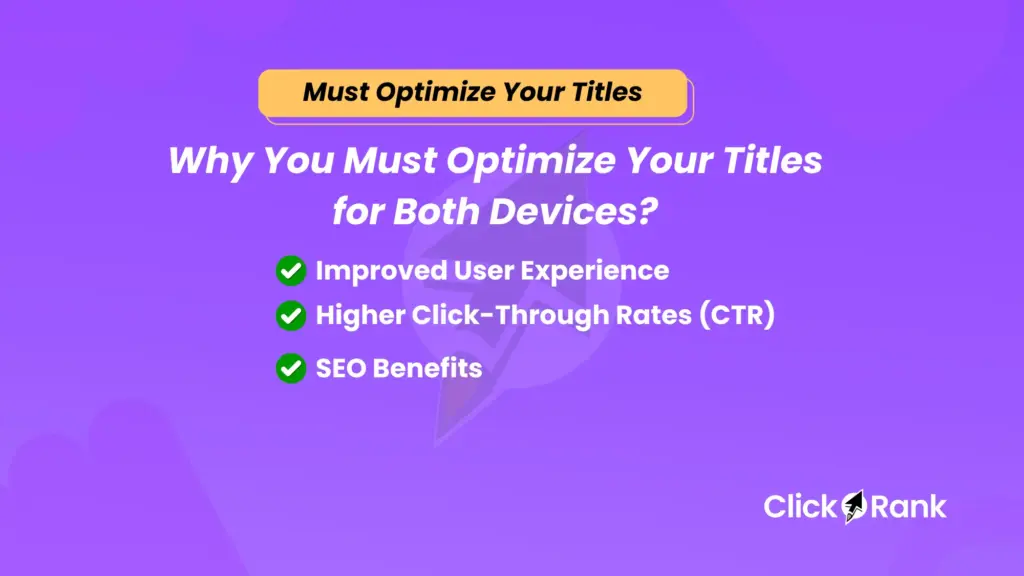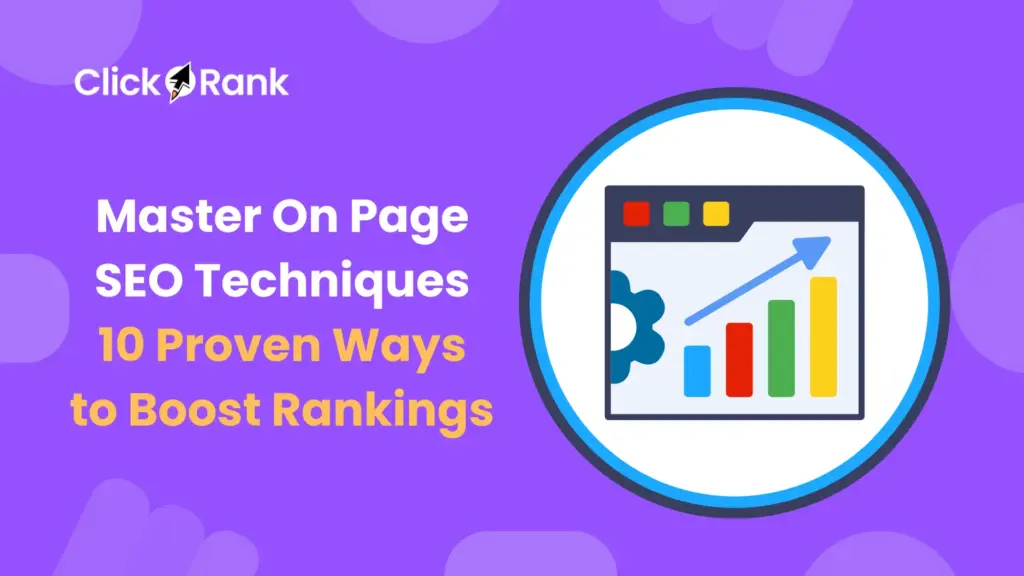Are you feeling frustrated because your website’s Mobile vs Desktop Meta Titles look amazing on desktop but get cut off on mobile search? It’s a common and confusing SEO problem. You put so much effort into crafting the perfect HTML title tag to improve your Click-Through Rate (CTR), only to find it’s completely truncated when someone searches on their phone.
This frustrating issue can seriously hurt your site’s performance. But what if there was an easier way? At ClickRank, we know how hard you work, and we believe your website’s hard work should pay off on every device. Our platform helps you get a clear SEO audit and one-click fixes, so you can stop worrying and start seeing results. In this guide, we’ll help you master your On Page SEO for both mobile and desktop so you never have to feel that frustration again.
What Are Meta Titles and Why Do They Change on Mobile?
I was so happy when I learned that meta titles are what a person sees on a Search Engine Results Page (SERP). They’re a very important factor for SEO because they tell both search engines and users what your page is all about. But when it comes to mobile, things can get tricky. Google often shortens or rewrites your title to make it fit, which can be a real headache. My team and I used to get so frustrated when our carefully crafted titles were rewritten. We all know how important it is to make a great first impression to a user.
Does the same title tag work for both mobile and desktop?
It’s natural to wonder if a single title tag will work for both desktop and mobile, but the answer is usually no. This is because of something called pixel width. A mobile phone screen is much smaller than a desktop computer screen, so the space for your title is more limited. Even though the HTML title tag is the same for both, how it’s displayed is not.
What is the core reason for the difference in display?
The core reason for the difference in display is how Google’s algorithm wants to give the best experience to a user. The algorithm tries to give a title that fits the screen size and the user’s search queries. This is part of Mobile SEO and Responsive Design, which focus on making websites look and work well on all devices. Sometimes, Google’s algorithm might even change your title to better match the user’s User Intent.
Why You Must Optimize Your Titles for Both Devices?
I used to be so confused about why it was so important to optimize for both devices, but now I know! With so many people using their phones to search for things, you can’t ignore Mobile Search. A good mobile meta title can really make a difference in how many people click on your link.

How does title truncation impact your CTR?
Title truncation is when your title gets cut off at the end. It’s a problem because a user may not be able to read the full title and get the full meaning of what your page is about. When a user can’t read the full title, they may not click on your link, which can lower your CTR. When I first saw my titles being truncated, I felt so disappointed. I put so much work into them! I quickly learned that it was something that needed to be fixed.
Why is mobile-first indexing so important for titles?
Mobile-First Indexing means Google primarily uses the mobile version of a website for ranking and indexing. This is a big deal! If your meta titles are not good on mobile, Google might not think they are very good for desktop either, which can hurt your rankings on both.
What Are the Key Differences in Meta Title Display?
The main differences are in the character limits and how Google handles the display. On desktop, you have more space. On mobile, the space is much smaller. You can also see things like emojis on a mobile phone more easily.
What are the ideal character lengths for mobile and desktop?
The ideal Title Tag Length is around 60 characters for desktop and around 55 characters for mobile, though it’s more about Pixel Width than a strict character count.
How does Google’s algorithm rewrite titles?
Google’s algorithm rewrites titles when it feels the current title is not good enough. It might be too long, not relevant to the content, or just not a great user experience. This is part of the Google’s Title Tag Rewrite process.
How Do I Write the Perfect Mobile vs Desktop Meta Titles?
This is something I struggled with at first, but with a few simple steps, it became easy. I felt so proud when I was able to write titles that worked on every device.
What are the best practices for mobile-friendly titles?
For Mobile SEO, keep your titles short and to the point. Put your most important keywords at the beginning. Make sure the title accurately reflects the content and provides value to the user. Also, consider using Emojis in Titles to make them stand out.
How can I create a compelling title that works for all devices?
You can create a compelling title by using strong action words and highlighting your unique selling points. Focus on Readability and User Intent so the user knows exactly what they will get when they click on your link. A/B Testing is also a great way to see what titles work best.
How can I avoid Google rewriting my titles?
To avoid Google’s Title Tag Rewrite, write titles that are helpful, relevant, and not too long. Make sure your title matches the content on your page. The more helpful and accurate your title is, the less likely Google is to change it.
How Do I Check and Fix Mobile Title Issues?
I love finding simple fixes for big problems. It makes me feel so proud and helpful. At ClickRank, we’ve made it so easy to find and fix title issues, so you don’t have to feel that frustration again.
Where can I see my mobile and desktop titles?
You can see your titles in a variety of places, including Google Search Console and other SEO tools. These tools will show you how your titles look on both desktop and mobile, so you can see if they are being truncated.
What is the best way to use Google Search Console to find truncation issues?
You can use the “Performance” report in Google Search Console to find your top-performing pages and see if their titles are being truncated. This is a great way to prioritize what needs to be fixed first.
Can ClickRank.ai or other SEO tools help with mobile title optimization?
Yes! ClickRank is built to help you with Mobile Title Optimization. Our One-Click Fixes can help you fix titles that are too long or not optimized for mobile. This is one of my favorite features because it makes it so easy to get things right.
What are the Common Mistakes to Avoid?
I get so mad when I see people making simple mistakes that hurt their SEO. You’ve worked so hard on your website, don’t let a simple mistake hold you back.
Why is keyword stuffing a bad idea?
Keyword stuffing is when you put too many keywords into your title. This is a bad idea because it can make your title look like spam and hurt your rankings. It’s much better to use a few well-placed keywords to improve your Keyword Placement.
How does title truncation affect user experience?
Title truncation affects User Experience (UX) by making your title difficult to read. When your title is cut off, the user may not know what your page is about and may not click on your link. This can seriously hurt your site’s performance.
Is there a perfect length for a title tag in 2025?
There's no one perfect length, but aim for around 55-60 characters for mobile and desktop to be safe. It's more about the Pixel Width and not the Character Limits.
Should I create different titles for my mobile and desktop websites?
You should not create different titles for each. The HTML Title Tag should be the same. The best thing you can do is write one that works well for both, so you can make Google happy.
What is the difference between a title tag and an H1 heading?
The HTML Title Tag is what shows up in the SERPs and the browser tab. The H1 heading is the main heading on the page itself. The two should be similar, but don't have to be the exact same.


